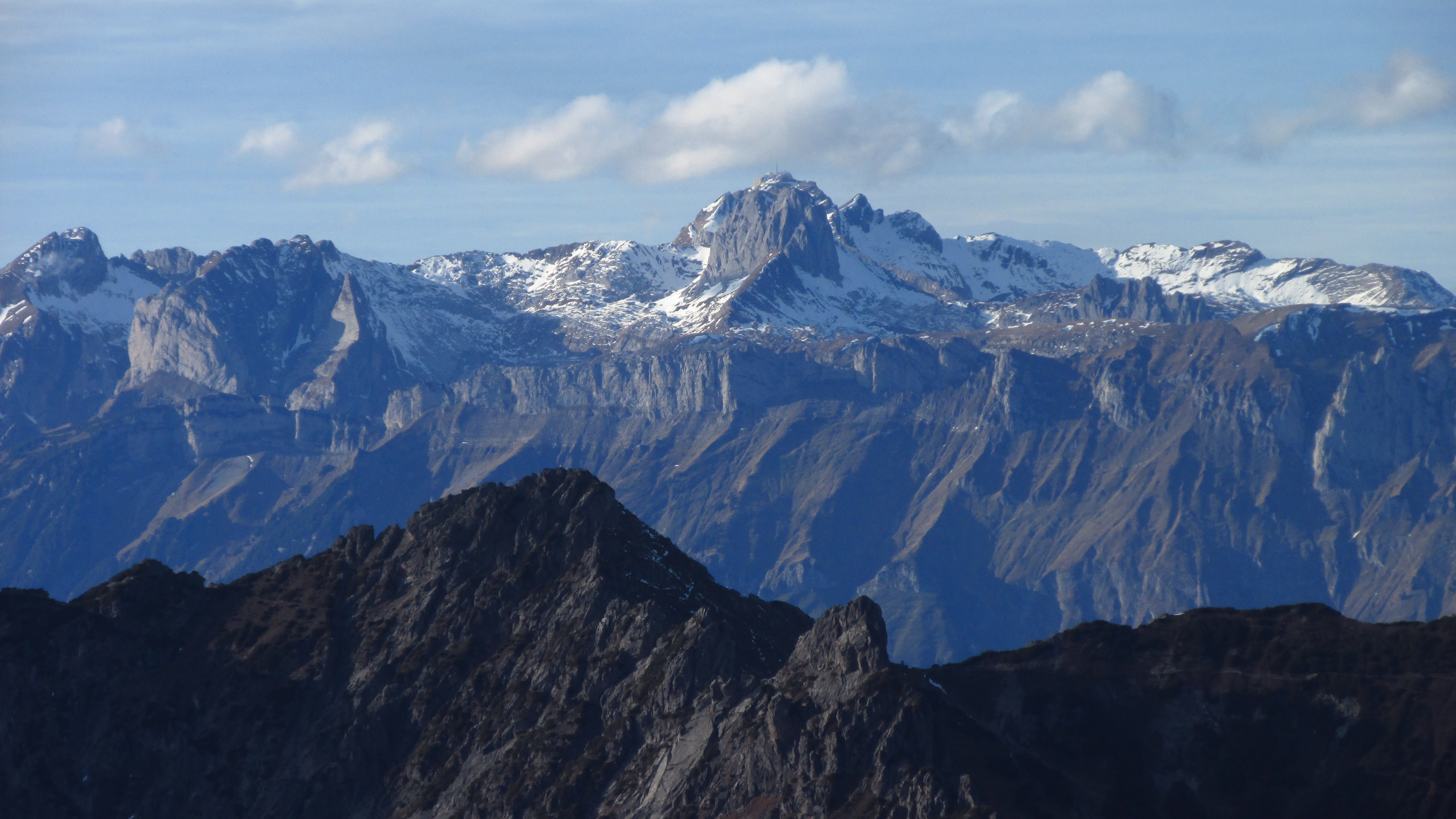Alpstein on:
[Wikipedia]
[Google]
[Amazon]
 The Alpstein are a subgroup of the Appenzell Alps in Switzerland. The Alpstein massif is in
The Alpstein are a subgroup of the Appenzell Alps in Switzerland. The Alpstein massif is in
Interactive spherical panorama tour through the Alpstein
{{Authority control Mountain ranges of Switzerland Appenzell Alps
 The Alpstein are a subgroup of the Appenzell Alps in Switzerland. The Alpstein massif is in
The Alpstein are a subgroup of the Appenzell Alps in Switzerland. The Alpstein massif is in Appenzell Innerrhoden
Appenzell Innerrhoden (; in English sometimes Appenzell Inner-Rhodes) (german: Kanton Appenzell Innerrhoden rm, Chantun Appenzell Dadens; french: Canton d'Appenzell Rhodes-Intérieures; it, Canton Appenzello Interno) is one of the 26 cantons ...
, Appenzell Ausserrhoden
Appenzell Ausserrhoden (; in English sometimes Appenzell Outer Rhodes) (german: Kanton Appenzell Ausserrhoden; rm, Chantun Appenzell Dadora; french: Canton d'Appenzell Rhodes-Extérieures; it, Canton Appenzello Esterno) is one of the 26 canton ...
and St. Gallen.
Despite it being rather low when compared to other Alpine peaks – the highest mountain is the Säntis at 2502 metres – the Alpstein, due to their northern "outpost" position only a short distance from Lake Constance
Lake Constance (german: Bodensee, ) refers to three bodies of water on the Rhine at the northern foot of the Alps: Upper Lake Constance (''Obersee''), Lower Lake Constance (''Untersee''), and a connecting stretch of the Rhine, called the Lak ...
(nearly 30 km) are relatively tall when compared to the surrounding area. The range also includes the Altenalp Türm as the northernmost summit above 2,000 metres in Switzerland.
Description
Geologically, the Alpstein massif is different from the predominantlygranitic
A granitoid is a generic term for a diverse category of coarse-grained igneous rocks that consist predominantly of quartz, plagioclase, and alkali feldspar. Granitoids range from plagioclase-rich tonalites to alkali-rich syenites and from quart ...
central Alps
The Alps () ; german: Alpen ; it, Alpi ; rm, Alps ; sl, Alpe . are the highest and most extensive mountain range system that lies entirely in Europe, stretching approximately across seven Alpine countries (from west to east): France, ...
. Alpstein are predominantly limestone massif
In geology, a massif ( or ) is a section of a planet's crust that is demarcated by faults or flexures. In the movement of the crust, a massif tends to retain its internal structure while being displaced as a whole. The term also refers to a ...
and thus represents a kind of western continuation of the eastern ranges, running between Germany
Germany, officially the Federal Republic of Germany (FRG),, is a country in Central Europe. It is the most populous member state of the European Union. Germany lies between the Baltic and North Sea to the north and the Alps to the sou ...
and Austria
Austria, , bar, Östareich officially the Republic of Austria, is a country in the southern part of Central Europe, lying in the Eastern Alps. It is a federation of nine states, one of which is the capital, Vienna, the most populous ...
.
Because of erosions, numerous cracks, caves and sinkholes which prevail in the limestone, two of the three lakes have no surface drainage: the water of the Fälensees flows by the mountain ridge southwest into the Rhine
The Rhine ; french: Rhin ; nl, Rijn ; wa, Rén ; li, Rien; rm, label=Sursilvan, Rein, rm, label=Sutsilvan and Surmiran, Ragn, rm, label=Rumantsch Grischun, Vallader and Puter, Rain; it, Reno ; gsw, Rhi(n), including in Alsatian dialect, Al ...
.
Morphologically, there are three main tectonic folds running from southwest to northeast. Only the Lisengrat, the connection between the two peaks Säntis Altman runs perpendicular to the main ridge. Between these mountain ranges are embedded in
External links
Interactive spherical panorama tour through the Alpstein
{{Authority control Mountain ranges of Switzerland Appenzell Alps